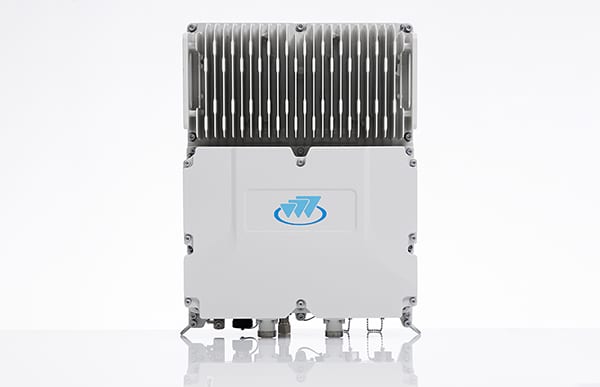In critical communications deployments, each environment offers physical, geographical and climatic characteristics that will be decisive when it comes to providing coverage and choosing the type of base station to propagate the radio signal.
There are different types of base stations, offering a wide variety of operating characteristics under different conditions, with a suitable solution for each type of scenario, but always aiming for maximum availability and reliability.
Indoor base stations in rack format
This is the most common type of base station, in which all its components are integrated in a rack-type cabinet, which provides more space for more modules or components. This can enable, for example, redundancy of all components, thereby improving system availability.
They are designed for installation in technical rooms with controlled temperature and humidity conditions and, in principle, with unlimited access to electricity grid, so power consumption is not considered a critical parameter, although the aim is to keep it as low as possible.
The great advantage that these base stations have usually provided is a higher RF power than other formats, as well as a greater number of voice and data channels, since the greater physical space available in the technical rooms together with their rack configuration allows the installation of more transceivers and TETRA carriers, as well as the necessary active cooling equipment to favour adequate thermal dissipation.
Outdoor compact base stations
These base stations are designed for installation in any type of outdoor scenario. They offer a high degree of IP protection, which allows them to operate in the most adverse conditions (rain, extreme heat, wind, humidity, saline environments…) without requiring an additional mechanical cover. Their design is more compact, with weight and size being the most important elements in their design, as they are usually installed outdoors on masts or on walls and it is important to both lighten and reduce their dimensions.
This smaller size means that the space available inside is smaller, and therefore, the ability to redund elements or add additional modules is more limited, although it is true that manufacturers strive to achieve the highest possible performance.
Power consumption is another key factor in their design, as they are often installed in inhospitable areas where access to power is limited, such as a forested or desert area where there is no access to the grid. In this case, one option to consider for supplying power to the base station is through solar panels, for which low power consumption is important.

In recent years, technological advances have meant that this base station format has improved its performance in terms of RF power and traffic channels. Thus, by adopting new signal processing techniques such as SDR (Software Defined Radio), small outdoor base stations have been able to match the performance of rack-mount base stations.
Transportable base stations
Due to the characteristics of size and ability to operate in hostile environmental conditions that we have reviewed in outdoor base stations, transportable base stations are ideal for installation in vehicles or, in general, to be used in mobility environments by incorporating transport accessories.
In this way, the use of this type of base station is the best alternative in disaster or emergency response scenarios for tactical units. Their capacity for immediate deployment means that they can provide coverage in areas where there was none, or quickly replace one that may have been damaged in a natural disaster. Similarly, they can be used to reinforce areas that already have coverage, but where it is desired to increase traffic capacity for festivals, demonstrations or any other type of event.
Because of its versatility, which makes it suitable for a wide variety of operating environments, it is important that it offers the greatest flexibility and simplicity of use. Thus, it is interesting, for example, that it has the capacity to work both with and without connection to a centralised node, and that it offers a quick start-up that can be carried out by personnel without extensive knowledge of radio technology.
It is also valuable that it includes its own system for the simple management of the base station and its users, so that functions such as adding and deleting groups and terminals, modifying operating parameters in real time, monitoring the status of the unit and displaying alarms in real time, among others, can be carried out.



